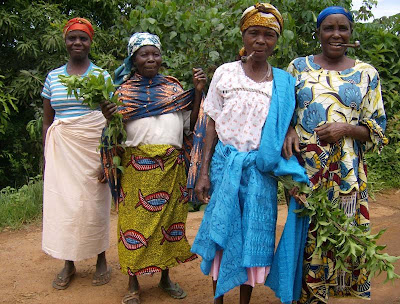 Angola was a Portuguese colony for 500 years. But until the 1920s, there was little investment and the Portuguese presence was confined to the coastal towns. There a creole or mestico class evolved. The interior was exploited as a source of slaves. Even after the abolition of slavery, it was a source of contract labour. Angolans began to agitate for independence in the mid-1950s. Three nationalist groups were formed: the MPLA in 1956, the FNLA in 1958 and UNITA in 1966. In 1961, the armed struggle was launched. But the principle of independence was not conceded until 1974, much later than most African countries. Portugal hastily arranged a conference with the 3 movements, all of which had gained Organisation of African Unity (OAU) recognition, to work out the transitional arrangements to independence. The agreement was set out in the Alvor Accord of January 1975. It provided for a transitional government to prepare a constitution and for elections to be held before independence day, set for 11 November 1975. But the agreement broke down and the movements fought each other for control of the capital. The Portuguese settlers left en masse. Elections were never held.
Angola was a Portuguese colony for 500 years. But until the 1920s, there was little investment and the Portuguese presence was confined to the coastal towns. There a creole or mestico class evolved. The interior was exploited as a source of slaves. Even after the abolition of slavery, it was a source of contract labour. Angolans began to agitate for independence in the mid-1950s. Three nationalist groups were formed: the MPLA in 1956, the FNLA in 1958 and UNITA in 1966. In 1961, the armed struggle was launched. But the principle of independence was not conceded until 1974, much later than most African countries. Portugal hastily arranged a conference with the 3 movements, all of which had gained Organisation of African Unity (OAU) recognition, to work out the transitional arrangements to independence. The agreement was set out in the Alvor Accord of January 1975. It provided for a transitional government to prepare a constitution and for elections to be held before independence day, set for 11 November 1975. But the agreement broke down and the movements fought each other for control of the capital. The Portuguese settlers left en masse. Elections were never held. Angola, more than three times the size of California, extends for more than 1,000 mi (1,609 km) along the South Atlantic in southwest Africa. The Democratic Republic of the Congo and the Republic of Congo are to the north and east, Zambia is to the east, and Namibia is to the south. A plateau averaging 6,000 ft (1,829 m) above sea level rises abruptly from the coastal lowlands. Nearly all the land is desert or savanna, with hardwood forests in the northeast.
The original inhabitants of Angola are thought to have been Khoisan speakers. After 1000, large numbers of Bantu speakers migrated to the region and became the dominant group. Angola derives its name from the Bantu kingdom of Ndongo, whose name for its king is ngola.
 Explored by the Portuguese navigator Diego Cão in 1482, Angola became a link in trade with India and Southeast Asia. Later it was a major source of slaves for Portugal's New World colony of Brazil. Development of the interior began after the Berlin Conference in 1885 fixed the colony's borders, and British and Portuguese investment fostered mining, railways, and agriculture.
Explored by the Portuguese navigator Diego Cão in 1482, Angola became a link in trade with India and Southeast Asia. Later it was a major source of slaves for Portugal's New World colony of Brazil. Development of the interior began after the Berlin Conference in 1885 fixed the colony's borders, and British and Portuguese investment fostered mining, railways, and agriculture.
Area: Total area 1,246,700 sq km
Population: 17.5 million (UN, 2008)
Capital City: Luanda
People: The main groups are Ovimbundu, Mbundu, Bakongo, Lunda-Tchokwe and Ngangela. There is also a small mestico community.
Languages: Portuguese (official) and local African languages.
Religion(s): Christianity, (of which largest Roman Catholic), indigenous African, and a tiny Moslem community.
Currency: 1 Kwanza (Kz) = 100 Lwei














